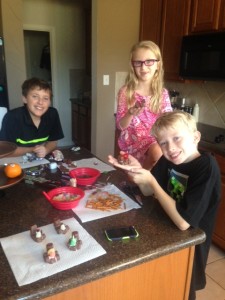Autism and bullying tend to go hand in hand. Unfortunately, suicide rates for those on the spectrum are also increased. One in sixty-eight will be diagnosed on the Autism spectrum. This intensely high number leads one to believe that nearly every child in the United States will, at one point or another, come in contact with an individual on the spectrum. It is imperative that we teach our neuro-typical kiddos what Autism looks like and how to interact with those on the spectrum.
No parent would allow their child to torment a cancer patient, and the same mentality should be instated when dealing with a child on the spectrum. Those on the spectrum will have differences. Their level of functionality, by the general population’s standards, can vary significantly. There are those who are completely non-verbal, while some individuals will seem to be functioning quite well, other than their tendency towards social awkwardness. The socially awkward trait lends itself to horrible teasing and isolation for children on the spectrum.
The comment “you’re so weird” is one of the most common statements I hear. This is an incredibly damaging way of communicating with a child on the spectrum. Parents would flinch if their child told a cancer patient they look weird without hair, but often times the belittling comments, towards kids on the spectrum, are either made by adults, or are ignored. When we, as adults, model a behavior of intolerance we are setting the bar incredibly low for our children. We should be teaching them how to negotiate the social waters with those who may not seem to react in a typical fashion.
There are ways to teach your children empathy and compassion for children on the autism spectrum. One of my favorite techniques is to remove all my facial and physical cues, and then ask my children what my words alone mean. This is how children on the spectrum “see” communication. They don’t register most of the physical and or facial cues we, as neuro-typical individuals, take for granted every single day. They are also incredibly literal.
A simple look, is not enough to get your message across with a child on the spectrum. I can give my neuro-typical children a look and they know the conversation is over. A child on the spectrum needs to be taken step-by-step though your expectations and then usually needs an explanation of your reasons for feeling this way. Kids on the spectrum are amazingly literal. What you say is what you mean. When you take away all the facial cues and an ability to understand sarcasm, there is a lot of room for misinterpretations.
Neuro-typical children need to be taught how to be tolerant of these social differences and how to embrace the amazing individual who is exhibiting these behaviors. We can’t expect kids on the spectrum to feel safe if we don’t make some changes. I beg all parents with neuro-typical children to take a stand and help stop the unintentional bullying that is causing children on the spectrum to become more depressed at younger ages. I beg you parents to teach your little ones how to love with open arms and an open mind.












